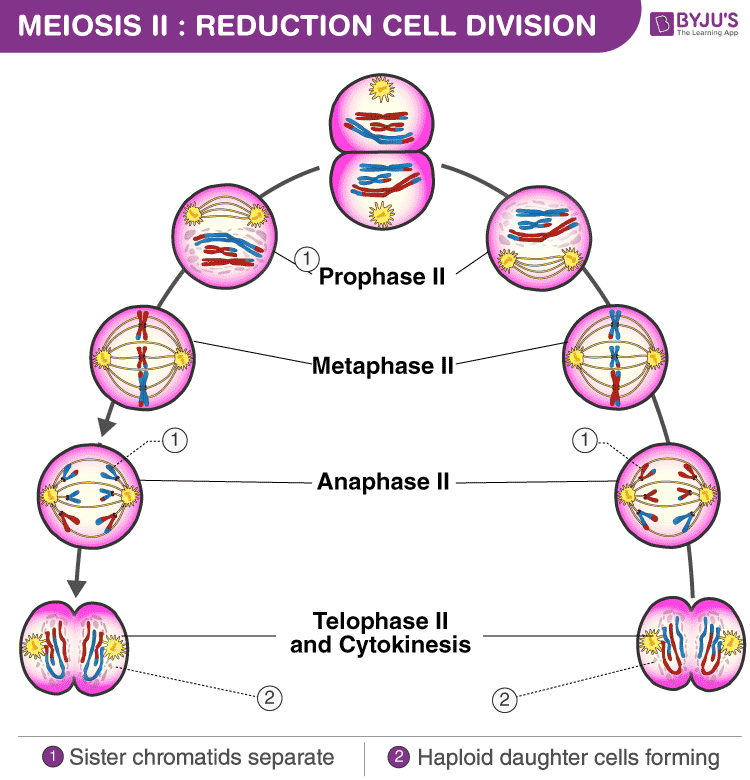
In the previous article Meiosis I, we have seen phase 1 of the meiotic cell division. Meiosis II also comprises the four stages and are relatively simple as compared to Meiosis I. Meiosis II relates the mitotic cell division.
Stages of Meiosis II
The four stages of meiosis II are as follows:-
- Prophase II – It immediately sets off after the cytokinesis when the daughter cells are formed. The chromosomes begin to condense accompanied by the dissolution of the nuclear membrane and the disappearance of the Golgi apparatus and ER complex.
- Metaphase II – The chromosomes are connected to the centriole poles at the kinetochores of sister chromatids through the microtubules. They also get aligned at the equator to form the metaphase plate.
- Anaphase II – In this phase of meiosis II, there is a simultaneous splitting of the centromere of each chromosome and the sister chromatids are pulled away towards the opposite poles. As the chromatids move towards the poles, the kinetochore is at the leading edge with the chromosomal arms trailing.
- Telophase II – The chromosomes dissolve again into an undifferentiated lump and a nuclear envelope develops around it. Followed by cytokinesis, telophase II marks the end of meiosis. Four haploid daughter cells are formed as a result.
Significance of Meiosis
Reproduction in animals takes place through the fusion of gametes i.e. two cells fuse together with their genetic material to develop a zygote. If germ cells, which give rise to gametes, also maintains their ploidy during division like the somatic cells, the zygote will have an accumulation of chromosomes in its nucleus. This accumulation will keep on increasing with every subsequent generation. Meiosis offers a very smart solution to this problem as it reduces the number of chromosomes in the gametes to half of their parent germ cells. Moreover, prophase I of meiosis allows recombination of homologous chromosomes.
This recombination is essential for the variation to be introduced in the genetic makeup of the gametes as this variation only holds the key to evolution through sexual reproduction.
Also Read: Meiosis 1
To learn about meiosis in detail visit BYJU’S.

These notes are really helpful 😁. Thanks a lot 😊
Thank you! This really helps me out with the concept.
Very useful